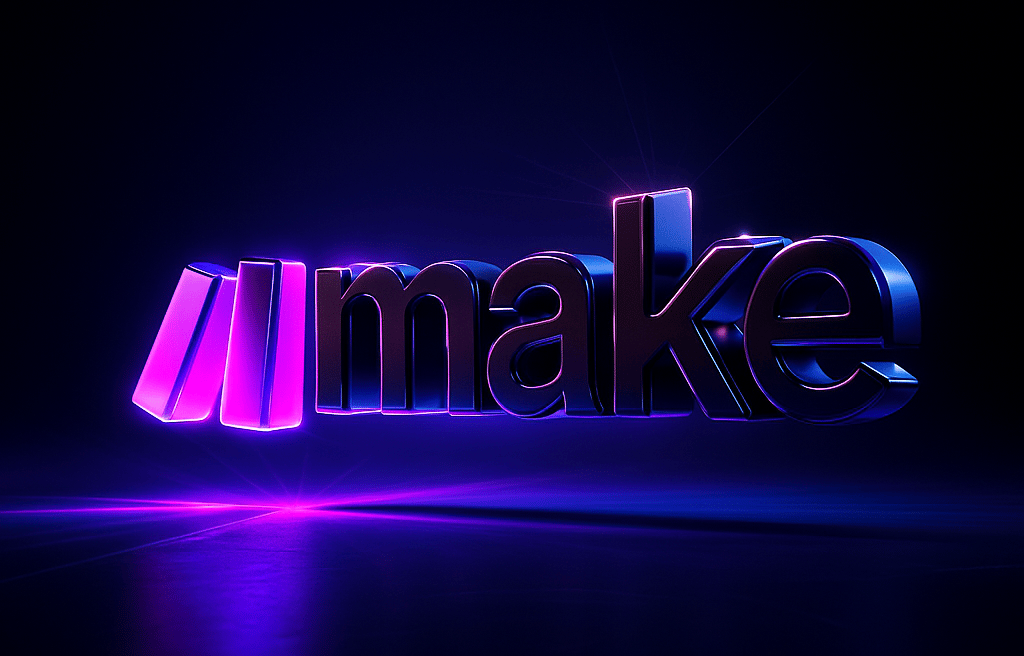Make's Visual Orchestration Revolutionizes AI Agent Management
Make advances AI agent management through visual orchestration, emphasizing creation, collaboration, and enterprise-scale coordination to enhance transparency, scalability, and control in automation and AI operations.
AIARTIFICIAL INTELLIGENCEAUTOMATIONDIGITAL AUTOMATIONTECHNOLOGY
Eric Sanders
10/30/20256 min read


Mastering AI Agent Management Through Visual Orchestration: The Next Frontier in Enterprise Automation
In today’s fast-evolving digital landscape, handing over control to artificial intelligence isn’t just a convenience—it’s fast becoming an operational imperative. Yet, as AI agents proliferate within enterprises, the complexity of managing, coordinating, and scaling them grows exponentially. This is where visual orchestration enters the stage, a game-changer that promises to put transparency, control, and collaboration front and center in the management of AI at scale.
Why Visual Orchestration Is the Missing Link in AI Agent Management
To claim that AI by itself runs the show is naïve. The real challenge lies in managing the growing swarm of AI agents—each with distinct tasks, data inputs, and decision flows—especially when layered into complex enterprise workflows. This complexity demands a solution beyond code-heavy scripts and siloed dashboards. It requires a holistic, intuitive, and collaborative approach to orchestration.
Visual orchestration provides exactly that—a user-friendly, graphical interface that allows stakeholders to create, coordinate, and monitor AI agents seamlessly. It's the glue binding diverse AI functions into a coherent operation, offering clarity where once was confusion.
From Fragmentation to Fluent Collaboration
Consider the current state of AI agent deployment: IT teams are often bogged down by separate workflows for different AI models, scattered debugging processes, and a lack of unified visibility on how these agents interplay. Without a centralized orchestration layer, transparency plummets and so does control.
Visual orchestration breaks down these walls by giving developers, data scientists, and business operators a shared canvas:
- Creation Made Accessible: Instead of wrestling with complex code, teams can design AI agent behaviors through drag-and-drop interfaces.
- Real-Time Collaboration: Different departments can contribute, review, and optimize AI workflows together—bridging gaps between technical and business perspectives.
- Immediate Visibility: Visual maps of AI agents’ statuses and interactions highlight bottlenecks, errors, or inefficiencies instantly.
One automation vendor’s push in this direction spotlights the vital need for democratizing AI agent management. By promoting visual orchestration, they emphasize enterprise-scale coordination that isn’t just about speed, but about intelligent speed—the ability to scale automation confidently without losing sight of what’s happening under the hood.
The Enterprise Impact of Scalable AI Management
For enterprises, adopting AI at scale presents a double-edged sword. On one hand, AI can turbocharge productivity, streamline operations, and uncover new business insights. On the other, unchecked complexity risks spiraling costs, opaque decision processes, and operational chaos.
Visual orchestration addresses these challenges by enhancing:
- Transparency: Knowing how and why AI agents make decisions builds trust with stakeholders and regulators alike.
- Scalability: Modular, visual workflows mean organizations can replicate, tweak, or expand AI processes without reinventing the wheel each time.
- Control: Enterprises regain command over AI behaviors, reducing unintended consequences or compliance risks.
Imagine an investment bank automating compliance checks with multiple AI agents. Without visual orchestration, any glitch could cascade into regulatory fines. With it, visual orchestration ensures every agent’s role and impact is logged, understood, and adjustable in real time.
What Can We Learn Beyond the Technical Buzz?
The takeaway isn’t just about adopting a new set of tools—it’s about evolving how organizations think about AI. Visual orchestration isn’t merely a management convenience; it’s a cultural shift. It cultivates a collaborative mindset around AI, breaking down barriers between teams and empowering decision-makers with real-time insights.
Here’s what enterprises should keep in mind:
- Invest in cross-functional teams: Visual orchestration flourishes when diverse expertise converges.
- Prioritize user-friendly design: Complex AI management should not remain the exclusive domain of coders.
- Embed feedback loops: Use orchestration dashboards to continuously monitor and refine AI agent performance.
- Treat orchestration as a strategic asset: Beyond execution, it offers a lens into operational intelligence and risk management.
The future of AI-driven automation will hinge not only on smarter algorithms but also on smarter governance. Visual orchestration is a critical step toward harmonizing these two forces at the enterprise scale.
Reimagining AI Control — A Practical, Human-Centered Approach
This is not about replacing human intelligence but augmenting it through better tools and frameworks. By turning AI management into a visual, interactive experience, enterprises empower people to work more intuitively, collaboratively, and with a deeper understanding of AI’s impact.
As one industry expert reflected: “Automation and AI don’t have to be black boxes. Visual orchestration opens the door to transparency and control that enterprises desperately need.”
It’s a reminder that beneath the technical jargon lies a simple truth: technology’s power is unleashed when humans remain at the center of its design and management.
How Will You Navigate the Complex World of AI Agents?
As enterprises accelerate AI adoption, the question isn’t whether you’ll manage multiple AI agents, but how. Will you settle for fragmented, opaque, and siloed operations that breed confusion? Or will you pioneer a visual orchestration approach that champions transparency, scalability, and collaboration?
How can your organization rethink its AI strategy to place people and clarity at the heart of automation?
The path forward demands not just smarter AI tools but smarter strategies for orchestrating them—visual orchestration might just be the compass you’ve been looking for.Mastering AI Agent Management Through Visual Orchestration: The Next Frontier in Enterprise Automation
In today’s fast-evolving digital landscape, handing over control to artificial intelligence isn’t just a convenience—it’s fast becoming an operational imperative. Yet, as AI agents proliferate within enterprises, the complexity of managing, coordinating, and scaling them grows exponentially. This is where visual orchestration enters the stage, a game-changer that promises to put transparency, control, and collaboration front and center in the management of AI at scale.
Why Visual Orchestration Is the Missing Link in AI Agent Management
To claim that AI by itself runs the show is naïve. The real challenge lies in managing the growing swarm of AI agents—each with distinct tasks, data inputs, and decision flows—especially when layered into complex enterprise workflows. This complexity demands a solution beyond code-heavy scripts and siloed dashboards. It requires a holistic, intuitive, and collaborative approach to orchestration.
Visual orchestration provides exactly that—a user-friendly, graphical interface that allows stakeholders to create, coordinate, and monitor AI agents seamlessly. It's the glue binding diverse AI functions into a coherent operation, offering clarity where once was confusion.
From Fragmentation to Fluent Collaboration
Consider the current state of AI agent deployment: IT teams are often bogged down by separate workflows for different AI models, scattered debugging processes, and a lack of unified visibility on how these agents interplay. Without a centralized orchestration layer, transparency plummets and so does control.
Visual orchestration breaks down these walls by giving developers, data scientists, and business operators a shared canvas:
- Creation Made Accessible: Instead of wrestling with complex code, teams can design AI agent behaviors through drag-and-drop interfaces.
- Real-Time Collaboration: Different departments can contribute, review, and optimize AI workflows together—bridging gaps between technical and business perspectives.
- Immediate Visibility: Visual maps of AI agents’ statuses and interactions highlight bottlenecks, errors, or inefficiencies instantly.
One automation vendor’s push in this direction spotlights the vital need for democratizing AI agent management. By promoting visual orchestration, they emphasize enterprise-scale coordination that isn’t just about speed, but about intelligent speed—the ability to scale automation confidently without losing sight of what’s happening under the hood.
The Enterprise Impact of Scalable AI Management
For enterprises, adopting AI at scale presents a double-edged sword. On one hand, AI can turbocharge productivity, streamline operations, and uncover new business insights. On the other, unchecked complexity risks spiraling costs, opaque decision processes, and operational chaos.
Visual orchestration addresses these challenges by enhancing:
- Transparency: Knowing how and why AI agents make decisions builds trust with stakeholders and regulators alike.
- Scalability: Modular, visual workflows mean organizations can replicate, tweak, or expand AI processes without reinventing the wheel each time.
- Control: Enterprises regain command over AI behaviors, reducing unintended consequences or compliance risks.
Imagine an investment bank automating compliance checks with multiple AI agents. Without visual orchestration, any glitch could cascade into regulatory fines. With it, visual orchestration ensures every agent’s role and impact is logged, understood, and adjustable in real time.
What Can We Learn Beyond the Technical Buzz?
The takeaway isn’t just about adopting a new set of tools—it’s about evolving how organizations think about AI. Visual orchestration isn’t merely a management convenience; it’s a cultural shift. It cultivates a collaborative mindset around AI, breaking down barriers between teams and empowering decision-makers with real-time insights.
Here’s what enterprises should keep in mind:
- Invest in cross-functional teams: Visual orchestration flourishes when diverse expertise converges.
- Prioritize user-friendly design: Complex AI management should not remain the exclusive domain of coders.
- Embed feedback loops: Use orchestration dashboards to continuously monitor and refine AI agent performance.
- Treat orchestration as a strategic asset: Beyond execution, it offers a lens into operational intelligence and risk management.
The future of AI-driven automation will hinge not only on smarter algorithms but also on smarter governance. Visual orchestration is a critical step toward harmonizing these two forces at the enterprise scale.
Reimagining AI Control — A Practical, Human-Centered Approach
This is not about replacing human intelligence but augmenting it through better tools and frameworks. By turning AI management into a visual, interactive experience, enterprises empower people to work more intuitively, collaboratively, and with a deeper understanding of AI’s impact.
As one industry expert reflected: “Automation and AI don’t have to be black boxes. Visual orchestration opens the door to transparency and control that enterprises desperately need.”
It’s a reminder that beneath the technical jargon lies a simple truth: technology’s power is unleashed when humans remain at the center of its design and management.
How Will You Navigate the Complex World of AI Agents?
As enterprises accelerate AI adoption, the question isn’t whether you’ll manage multiple AI agents, but how. Will you settle for fragmented, opaque, and siloed operations that breed confusion? Or will you pioneer a visual orchestration approach that champions transparency, scalability, and collaboration?
How can your organization rethink its AI strategy to place people and clarity at the heart of automation?
The path forward demands not just smarter AI tools but smarter strategies for orchestrating them—visual orchestration might just be the compass you’ve been looking for.
Efficiency
Transform your workflows and reclaim your time.
Contact Us
Need A Custom Solutions? Lets connect!
info@thedigiadvantagepro.com
772-228-1085
© 2025. All rights reserved.
